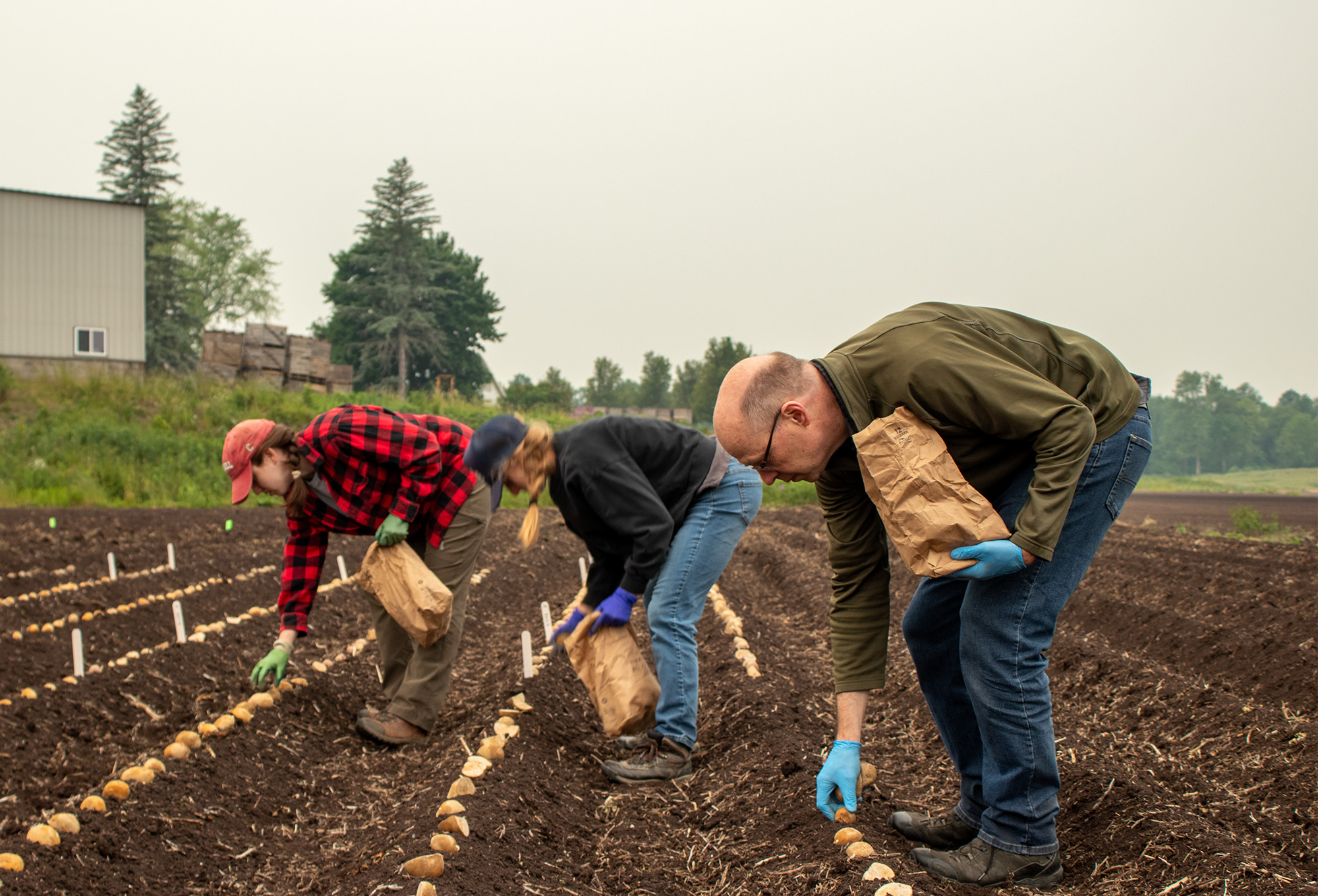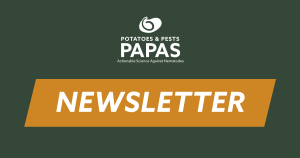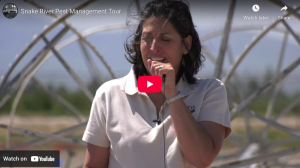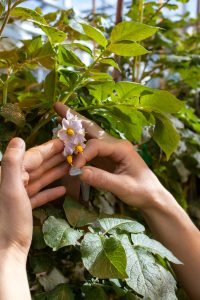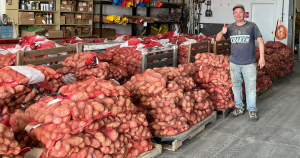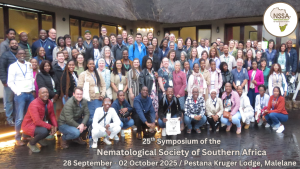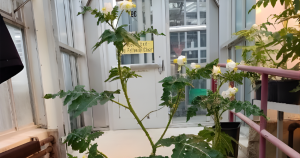Selecting for Success: Growing Potatoes in “Muck-nificent” Soil
As a clone makes it to the later stages of a breeding program, it is important to test it in different growing environments because new cultivars need to perform well in multiple regions. One of the environments the Cornell potato breeding program uses to test elite clones are muck fields in the northern part of the state.
Muck fields were originally swamps or shallow ponds that have been drained to be used for agriculture. Muck soils consist of highly decomposed organic material, retain water very well, and are ideal for growing vegetables like potatoes and onions. With approximately 30,000 acres of arable muck land in New York, the breeding program takes this environment into consideration when evaluating performance of candidate varieties.
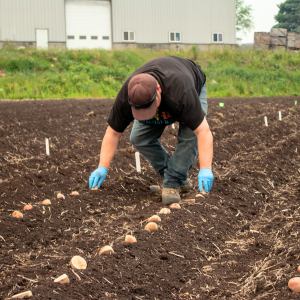
For on-farm muck field trials, like all yield trials, the planting plan is established in advance, with one consideration being to avoid planting replicates of the same elite clone in the same row, as not-uncommon mishaps from farm machinery during the growing season tend to happen along an entire row, while adjacent rows are left unscathed. Yield trials also include the use of potatoes with different color skin as markers, to separate trial plots and prevent accidental mixing, and pre-selected check cultivars to serve as comparators at harvest.
In contrast to our trials planted in mineral soils, the muck trials are planted by hand by members of the breeding program crew. Tubers for the elite clones, checks, and markers are evenly spaced on pre-made hills and then pushed into the loose soil.
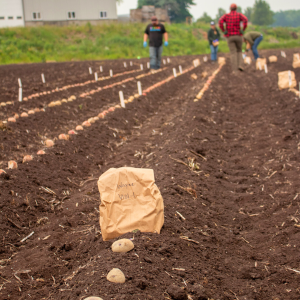
Once the entire trial is planted, crop management is overseen by the cooperating grower. The breeder typically visits once or twice during the season to check on plants. However, this is less important than it is for many other crops, since the primary evaluation in a potato breeding program occurs during and after harvest.
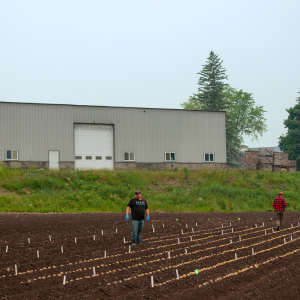
Article and Photos by Pia Spychalla

